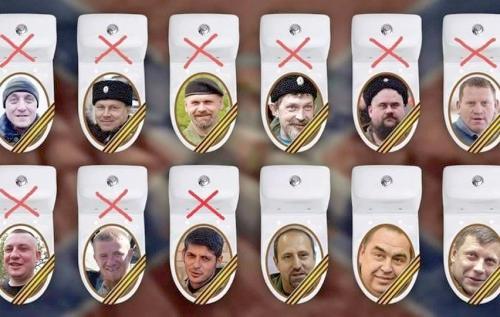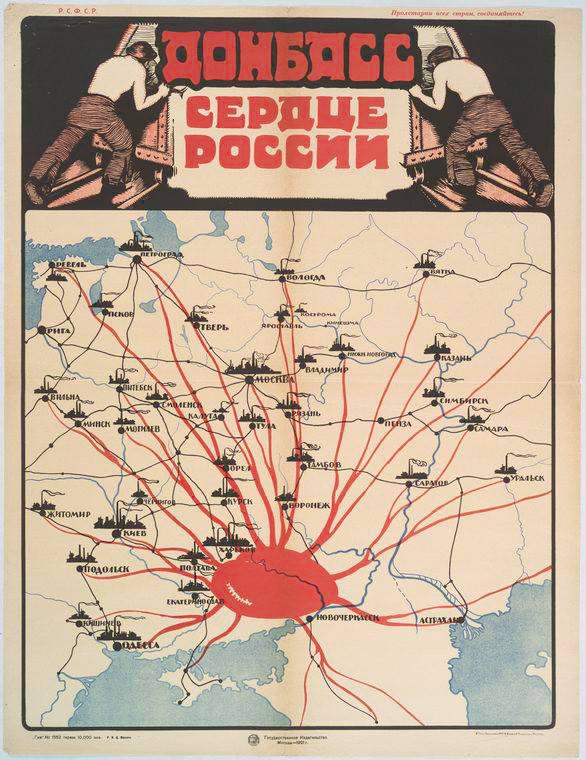
Leaders of East-Ukrainian separatists. Red crosses mark those, who were assassinated in the last several months.
In last several months 9 out of 12 military commanders and rulers of Donbas (East-Ukrainian) separatists were assassinated. Who killed them?
The Russian official theory was that the separatists were killed by the Ukrainian agents. Many believed another theory, that the leaders of the competing militant groups were killing each other. The third theory, supported by the most of democratically oriented commentators, suspected that militant leaders were killed by Putin’s agents, as Russian government was preparing to give the Donbas territories back to Ukraine and the potential troublemakers were not needed by Putin any more.
A week ago the situation had seemed to change drastically. One of the surviving separatists’ leaders, the President of the self proclaimed Donetsk People Republic, Alexander Zakharchenko, made a statement to the National “Russia 1” TV channel that “Only 60 days remains of Ukraine’s existence as a state” and “the countdown has already started”. It seems like there is a clear new Kremlin plan concerning Ukraine. The separatist leader Involuntarily revealed some assumptions previously voiced by many Ukrainian politicians and journalists.
It looks like Putin, being disappointed in his expectations that Trump will stop anti-Russian sanctions, now decided to get tough in order to check toughness of the new American President.
What is the actual Putin’s plan for the separatists’ “republics”?
Before the war the population of Donetsk and Lugansk regions was 6.5 million. Parts of the territories of both regions are still under control of Ukraine. One and a half million people have fled the self-proclaimed republics to Russia and Ukraine. However, one and a half to two million people are still staying in the separatists controlled territories.
These people have only three sources to sustain their livelihood. Natural economy (their small personal gardens), money sent from Russia and the few remaining operating businesses: steel mills and coal mines. The businesses were lately shipping their product (especially coal) to Ukraine. This coal is the main source of energy in Ukraine. Russia doesn’t need Donbas coal; it has now other sources of coal on its own territory.
Though the war was going on, Ukraine was buying Donbas coal and steel and it was shipped to Ukraine by the railroad, which was sometimes whimsically crossing the battle field many times. Thus, despite of the war, the Ukrainian authorities, in fact, allowed the separatists to earn a lot of money, without which the population of the area wouldn’t be able to survive.
Lately, after Donald Trump signaled that, as part of his deal with Vladimir Putin, the US may withdraw American support to Ukraine, the
groups of Ukrainian militant not controlled by the government nationalists started stopping freight trains on their way to Ukraine from the rebellious “republics”
New York Times describes the situation:
“The blockaders, as they call themselves, are a relatively new movement but are already becoming relevant to the delicate politics of peace in Ukraine, seemingly a focus of the Trump administration as it seeks to establish warmer ties with Russia. Their primary goal is to cut off the trains carrying coal from the east that powers industry in the west but also is a major source of income for the Russian-backed eastern republics.”
On March 1, in answer to the actions of “blockaders”, the leaders of the self-proclaimed “republics” stated that they are going to expropriate all the industry in their territories, which belonged to Ukrainian state or Ukrainian citizens.
Meanwhile most of Russians remember the time when Ukraine was part of the Soviet Union, which for many was a natural heir of the Russian Empire. The real border between Russia and Ukraine didn’t exist. Most of the population of Eastern Ukraine were Russians and Donbas was considered one of the most important industrial area of Russia. There existed even a poster of 1920-s: “Donbas is the heart of Russia”:

Not long ago the Russian Federal News Agency asked Mikhail Remizov, a well-known Russian political scientist, adviser to Kremlin, and president of the National Strategy Institute: “What future can await Donbas in the coming year?”
Mikhail Remizov answered:
“Under the circumstances prevailing at the moment scenario of the return of Donbas to Ukraine, implied by Minsk protocol, cannot be realized…
“If the conflict in Donbas will return to its ‘hot’ stage, it is likely to cause the sides involved in the conflict to respond the same way, as they responded in the early stages of military escalation… The new American president would have to prove that he is a tough American guy, who would allow nobody to misbehave and show disrespect to partners…
“The granting of Russian citizenship to residents of Donetsk and Lugansk would be an impeccable, humanitarian gesture from the international legal point of view. Even in the framework of the Minsk agreements Russia has every right to do it.
“We need to show an honest and full support to those who called for Russian help in Donetsk and Lugansk… It is important to show the people of Ukraine that Russia, in the end, still will come to the rescue of those of them who really put everything at stake for the sake of Russia.”
NBC NEWS commented the latest events:
“ ‘ It’s absolutely possible that the Kremlin will try to influence Ukraine more if the U.S. distances itself from the country,’ said Igor Sutyagin, a research fellow at the Royal United Services Institute (RUSI), a London-based think tank. ‘If Trump steps back then that will be an invitation for Putin to step forward’ “
On March 2, a journalist Alexander Skobov, a prominent activist of the anti–Putin opposition, wrote to website Grani.ru:
“The new brazen annexation in the very heart of Europe would be a real nightmare for the Western elites. It would mean a final death of the international order, which emerged after World War II…
”It is believed that Putin deliberately breaks ‘system rules’ of the modern world order. He considers this modern order of the world (as well as the dominant role of the West in it) hidebound and doomed. And he wants to become its gravedigger, to secure for himself a place, if not of the chairman, at least of the co-chairman of the globe in the future world…
”It is impossible to save the modern world, albeit imperfect in many ways, but still relatively humane, without realizing that Putin is its mortal enemy.”

